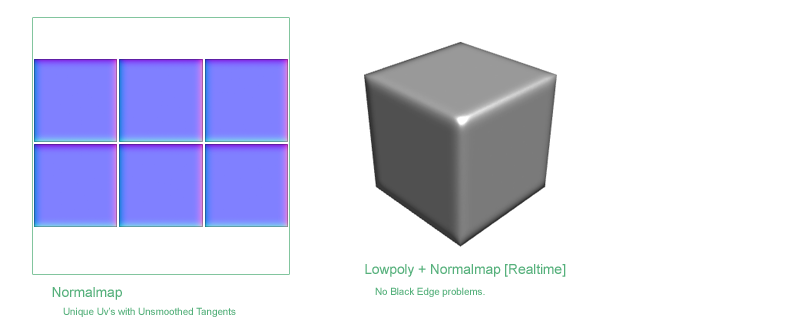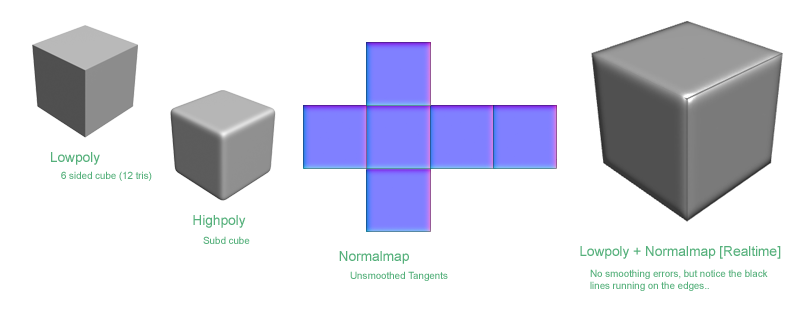The BRAWL² Tournament Challenge has been announced!
It starts May 12, and ends Oct 17. Let's see what you got!
https://polycount.com/discussion/237047/the-brawl²-tournament
It starts May 12, and ends Oct 17. Let's see what you got!
https://polycount.com/discussion/237047/the-brawl²-tournament
How to bake a clean normal map without split UVs Island on every hard edge
Hi everyone !
I got a quick question about normal map baking and texturing workflow
I've read some articles about Normal map baking, and they all said that in order to have a clean result, I have to have Smoothing split, and UVs split on every hard edge
for example like this box

but for texturing purpose sometime I can not have UVs split on every hard edge and then the normal seam show up

my question is is there anyway to have clean normal map without have to have UVs split on hard edge
I've saw some people have very smooth normal map and they didn't split the UVs at all. It's must be some trick out there
.
I got a quick question about normal map baking and texturing workflow
I've read some articles about Normal map baking, and they all said that in order to have a clean result, I have to have Smoothing split, and UVs split on every hard edge
for example like this box

but for texturing purpose sometime I can not have UVs split on every hard edge and then the normal seam show up

my question is is there anyway to have clean normal map without have to have UVs split on hard edge
I've saw some people have very smooth normal map and they didn't split the UVs at all. It's must be some trick out there
.

Replies
The best way is... find a sample and take a look how the low poly is modeled, how the smoothing groups are set etc....
Now Handplane is a whole other thing. Alec Moody has some videos out that really explains things well. Heres his website http://www.handplane3d.com/. The idea behind this program is to limit the need for smoothing groups altogether. When you're working with a company they may or may not have a synced workflow. What this means is that the game engine you're using is literally synced up with the engine you're baking your normal maps out of. Handplane is a way to mimic a synced workflow, just with a few extra little steps while reaping the benefits just the same.
But even if you have a synced workflow, doesn't compression and mipmapping cause your normal maps to run into issues holding those harsh gradients?
Using Substance to bake things seems good to me, since I'll probably be using it for texturing pretty extensively.
Edit: I own both Substance Designer and Painter (v5 of designer and v1.5 of Painter). I'm not sure if baking in Designer vs Painter is better. I assume I'll end up using Painter for lots of assets, so tentatively I may start by going over lots of Allegorithmic's video tutorials for Painter as a starting point for figuring out my new pipeline. If someone thinks I'll come across bad/outdated information that way, let me know!
The most reasonable way I've seen multiple bakes employed was in this video by Nick Quackenbush and the main thing that makes his approach practical is that his mask is generated procedurally without the need for manual work that needs to be repeated every time the model is iterated on.
Apologies for the bump and slob advice, guess I shouldve stated that I dont recommend my method on something that someone else might use in the future or a model that will go through iterations, was purely based on a private model bases, but slob advice nevertheless.
good stuff here thanks